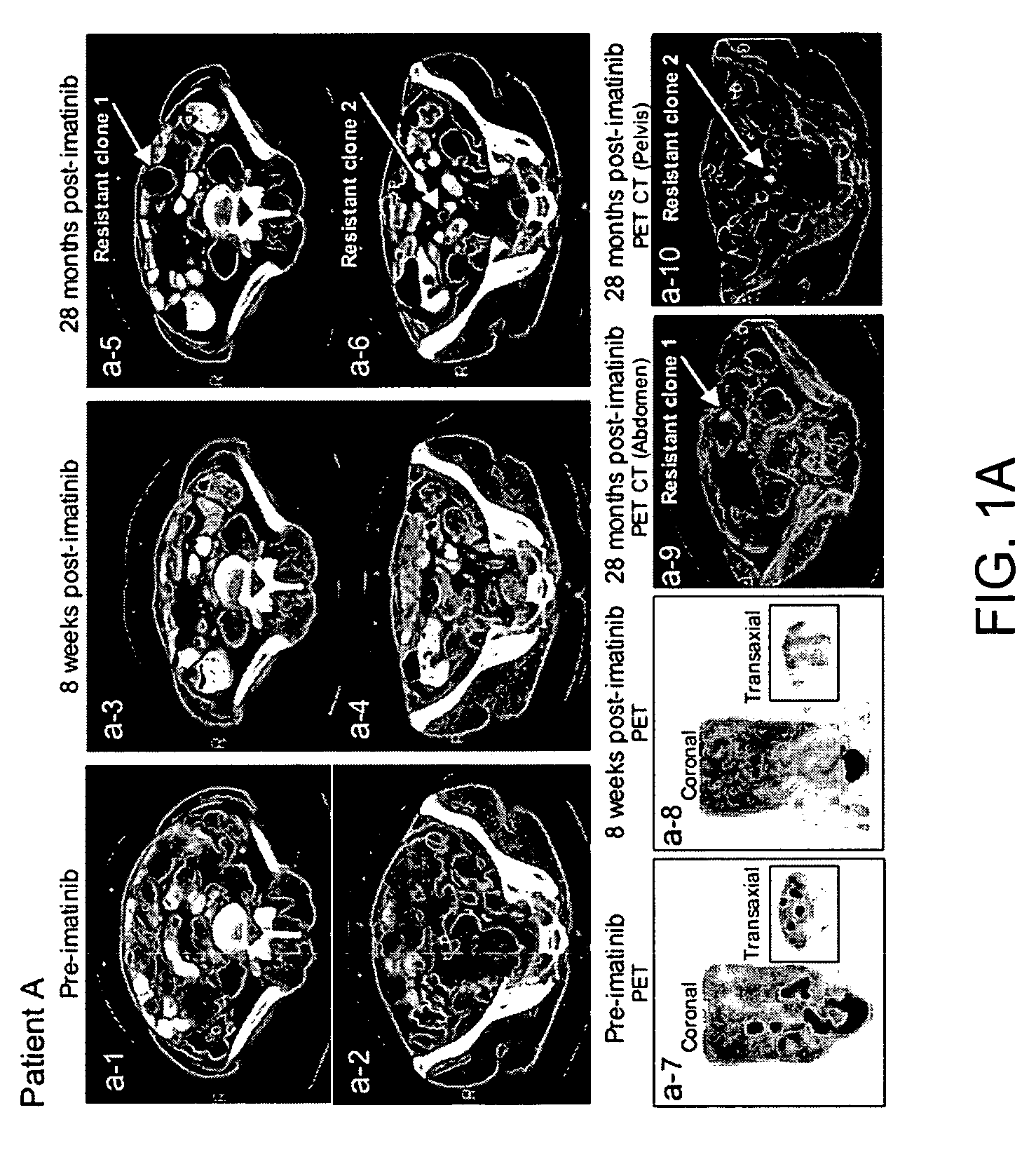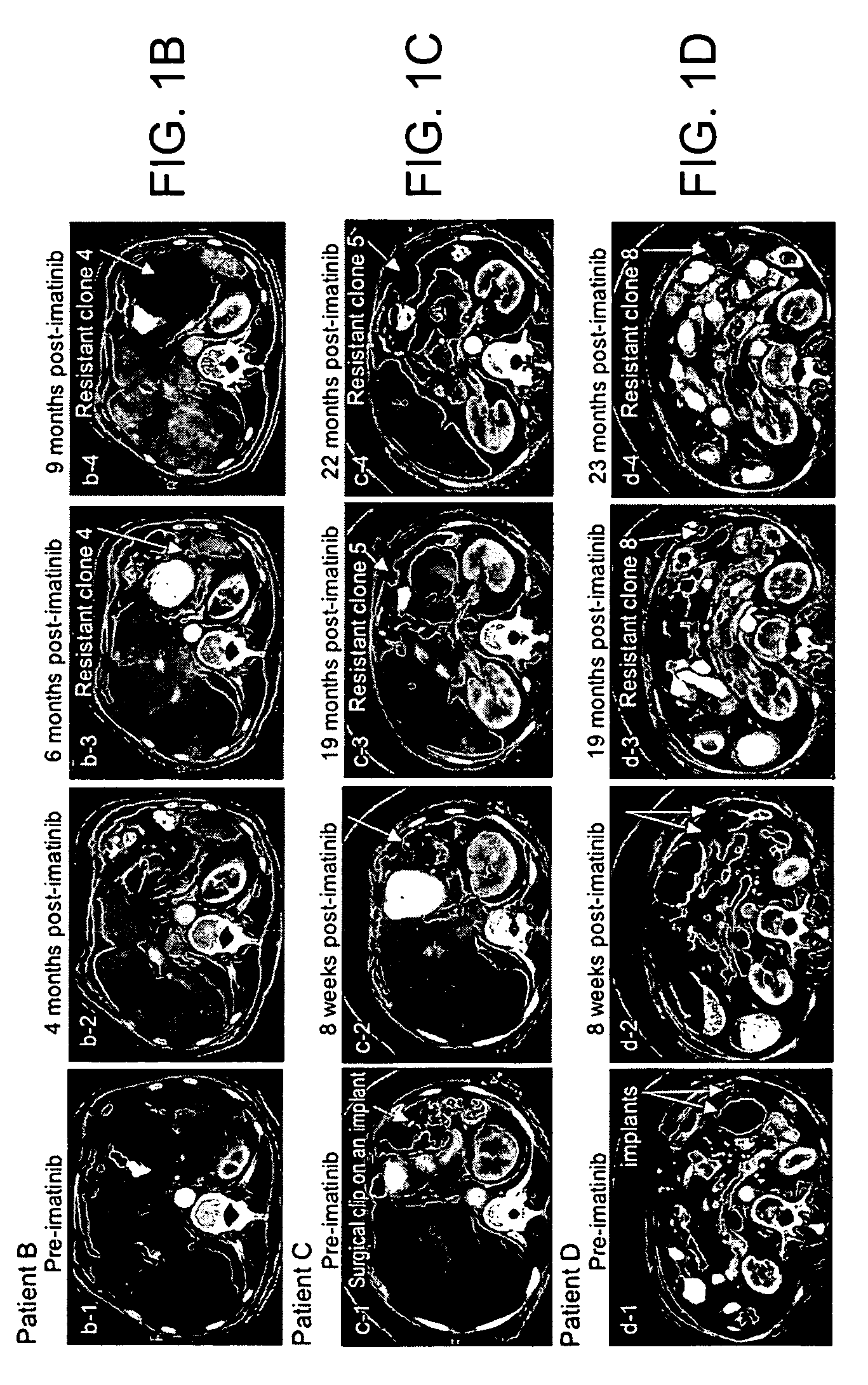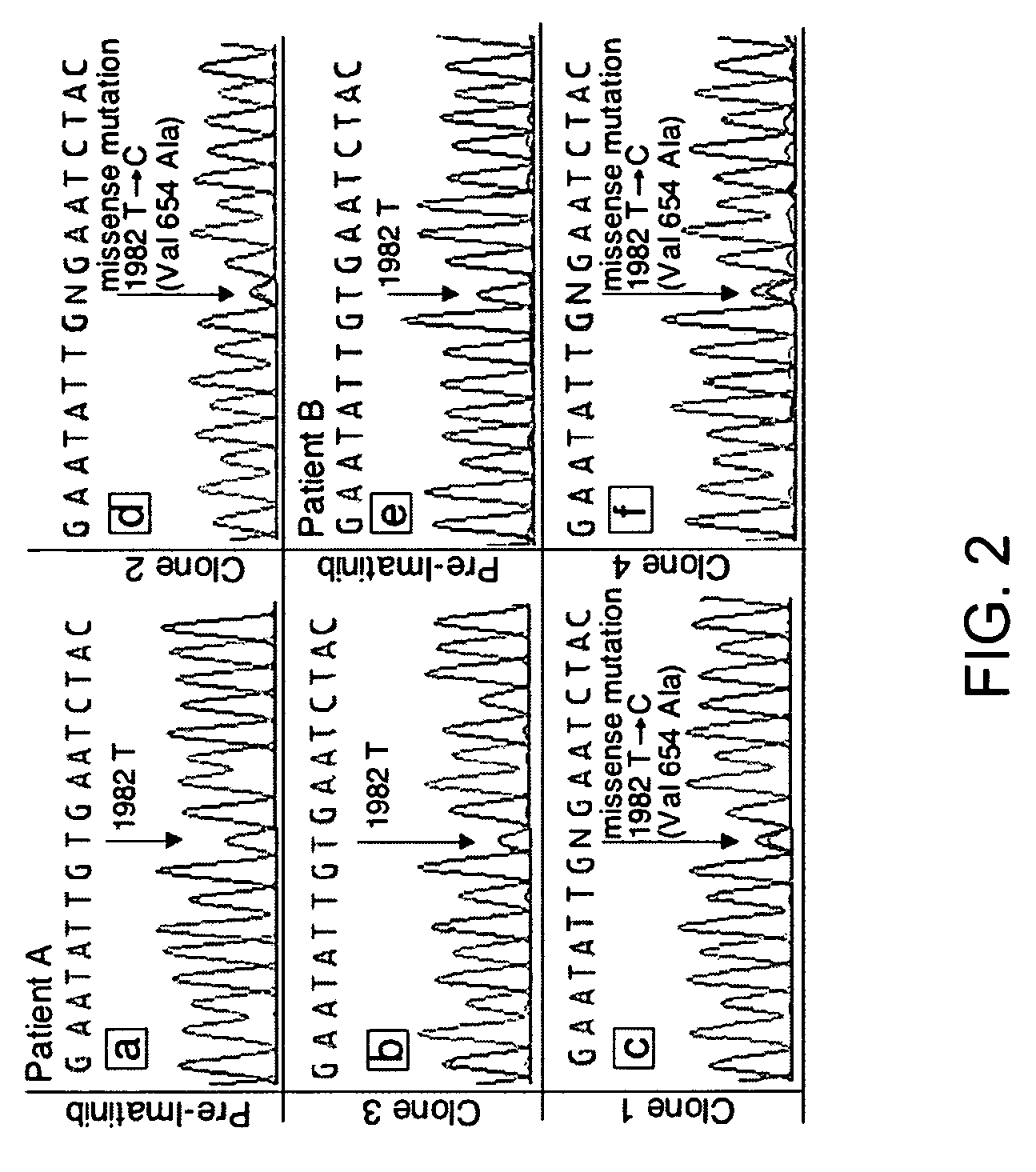Mutations in KIT confer imatinib resistance in gastrointestinal stromal tumors
- Summary
- Abstract
- Description
- Claims
- Application Information
AI Technical Summary
Benefits of technology
Problems solved by technology
Method used
Image
Examples
example 1
Exemplary Methods
Patient and Clinical Trials
[0185]Ten patients participated in IRB-approved phase III randomized intergroup trial S00-33, and two patients were treated with imatinib off protocol after the S00-33 intergroup trial was closed. All tumor specimens were obtained with consent on IRB-approved laboratory trial LAB02-433.
Cytogenetic Analyses
[0186]Conventional cytogenetic analysis was performed on primary GIST cells from patient A, Clones 1 and 2 after 72-96 hours of culture. The cells were processed by conventional methods using colcemid, potassium chloride, and 3:1 methanol / acetic acid. The chromosomes were then banded by using a trypsin-giemsa (GTG) technique. Twenty metaphases were analyzed.
Genomic DNA and cDNA Sequence Analysis of KIT
[0187]DNA was isolated from paraffin-embedded or frozen tissue or peripheral blood mononuclear cells (PBMC) by using a QIAamp DNA mini kit (Qiagen Inc., Valencia, Calif.) according to the manufacturer's instructions. RNA was extracted from f...
example 2
Patients and Clinical Course
[0192]The clinical course of GIST patients varies, most patients continue to enjoy remission, but a small percent of GIST patients who had initial near complete response, subsequently showed mixed response with the emergence of new liver lesion(s) or rapidly progressing imatinib-resistant implant(s) while the rest of implants and or liver metastases remained responsive to imatinib. At present time, among approximately 130 patients, the present inventors have identified 5 patients who unequivocally developed imatinib resistance under close surveillances by radiographic criteria and were amenable for biopsy or surgical resection of the resistant implants, and all 5 patients (designated as patients A-E, Table 2) were included in this study.
[0193]
TABLE 2KIT sequence of pre-imatinib, post-imatinibresidual GISTs and clones 1-11Patients (A-L)and characteristicsKIT sequenceof GIST specimensExon 11Exon 9Exon 13A: Pre-imatinib1690T→GNormalNormalA: Clone 1:1690T→GNo...
example 3
Kit Mutation Prior to Imatinib Treatment
[0200]Direct sequencing of KIT genomic DNA (exons 9, 11, 13, 15, 17) was performed on all GISTs, including paraffin-embedded specimens. Direct sequencing of cDNA was performed on clones 1-11 and all surgical and biopsy specimens of GISTs. The results of KIT mutations, deletions (del) and insertion (ins) of all 12 patients are summarized in Table 2. The corresponding amino acids changes in KIT are listed in the footnote of Table 2. The initiating events that cause constitutively active KIT of patients A-D and J-L involved different mutation sites in exon 11 (ranging from nucleotides 1690 through 1708) resulting in amino acid changes (ranging from Try557 to Glu562) in cytoplasmic juxtamembrane region. Patients E-I showed 6 b.p insertion in exon 9 and resulting in tandem repeat of AlaTyr502-503 in extracellular juxtamembrane region.
PUM
| Property | Measurement | Unit |
|---|---|---|
| temperatures | aaaaa | aaaaa |
| temperatures | aaaaa | aaaaa |
| temperatures | aaaaa | aaaaa |
Abstract
Description
Claims
Application Information
 Login to View More
Login to View More - R&D
- Intellectual Property
- Life Sciences
- Materials
- Tech Scout
- Unparalleled Data Quality
- Higher Quality Content
- 60% Fewer Hallucinations
Browse by: Latest US Patents, China's latest patents, Technical Efficacy Thesaurus, Application Domain, Technology Topic, Popular Technical Reports.
© 2025 PatSnap. All rights reserved.Legal|Privacy policy|Modern Slavery Act Transparency Statement|Sitemap|About US| Contact US: help@patsnap.com



